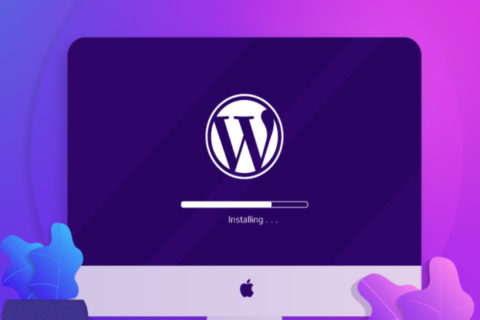Overview
WordPress is the most broadly used Content Management System (CMS), powering over 30% of all websites and in this blog we will discuss some WordPress tips to make your website secure. However, as it rises in popularity, hackers have noticed and are beginning to target WordPress sites explicitly. You are not an exception, regardless of what kind of content your website offers. Moreover, you may also be hacked if you do not take the necessary safeguards. You should check the security of your website, as you do with anything technology-related. Many website owners nowadays are concerned about WordPress security. An open-source script is regarded to be vulnerable to a variety of attacks. Is that true? And, if that’s the case, how can you keep your WordPress site safe? It’s a fallacy that WordPress doesn’t come with built-in security. WordPress websites, in fact, are far more secure than their online counterparts.
We’ll go over a few quick tips in this article to help you secure your WordPress site even further. You’ll be well on your way to securing your WordPress website for good after using these strategies and following up with regular WordPress security assessments.
Is WordPress Secure?
Is WordPress secure? That’s the first question that comes to mind. Yes, in general. The majority of the time, this is due to consumers continuing to adopt industry-proven security worst-practices. Hackers stay on top of their cybercrime game by using old WordPress software, nulled plugins, poor system administration, credential management, and a lack of necessary Web and security expertise among non-techie WordPress users. A hacked WordPress site can harm your company’s revenue and reputation. Hackers can steal user information and passwords, install harmful software, and even infect your users with malware. Worst case scenario, you may be forced to pay ransomware to hackers in order to recover access to your website.
If you care about the security of your website, you should follow the WordPress security best practices. While the WordPress core software is quite secure and frequently reviewed by hundreds of developers, you can still do a lot to keep your site safe. There’s a lot you can do as a website owner to increase WordPress security. Even if you’ve put in a lot of effort into creating your site, it can still end up in danger, even though you’ve done nothing wrong. This is how the internet operates, as well as how random attacks are carried out.
10 WordPress Tips to make your website secure:
Keeping WordPress Updated:
Among the 10 WordPress tips, this is one of the easiest and technique to keep your website secure. WordPress is a free, open-source programme that is updated on a regular basis. WordPress installs minor updates by default. You must manually start the update process for significant releases. WordPress also comes with a library of thousands of plugins and themes that you can use to customize your site. Third-party developers are in charge of maintaining these plugins and themes, and they release updates on a regular basis. These WordPress upgrades are critical for your WordPress site’s security and stability. Make that your WordPress core, plugins, and theme are all up to date.
Stolen passwords are the most common method of WordPress hacking. Use more challenging passwords that are unique to your website to make this more difficult. Because solid passwords are difficult to remember, many beginners avoid them. The good news is that you no longer have to memorize passwords. You can use a password manager to keep track of your passwords. Another strategy to lower the danger is to give people access to your WordPress admin account if necessary.
The Role of WordPress Hosting:
The security of your WordPress site is mostly determined by the WordPress hosting service you use. A competent shared hosting service goes above and beyond to secure its servers from common threats. Here’s how a reputable web hosting business protects your websites and data in the background.
- They keep a close eye on their network for anything odd.
- To prevent large-scale DDOS assaults, all good hosting firms have tools in place.
- To prevent hackers from exploiting a known security weakness in an older version, they maintain their server software, PHP versions, and hardware up to date.
- They have disaster recovery and accident policies in place, allowing them to preserve your data in the event of a significant incident.
A shared hosting plan allows you to share server resources with a large number of other clients. This exposes your website to the possibility of cross-site contamination, which occurs when a hacker uses a neighboring site to attack yours. Using a managed WordPress hosting provider ensures that your website is more secure.
Install a WordPress Backup Solution:
Backups are your first line of defense in the event of a WordPress assault. Remember that nothing is really safe. If government websites can be hacked, you may be sure that yours can, too. Backing up your WordPress site allows you to swiftly restore it if something goes wrong. You can utilize a variety of free and paid WordPress backup plugins.
Best WordPress Security Plugin:
Following backups, we’ll set up an auditing and monitoring system to keep track of everything that happens on your website. File integrity monitoring, failed login attempts, virus scanning, and more services are included. This WordPress security plugin is really strong, so have a look at all of the tabs and options to see what it can do, including malware scanning, audit logs, and the recording of failed login attempts, among other things.
Enable Web Application Firewall (WAF):
Using a web application firewall is the simplest approach to protect your site and feel secure about your WordPress security (WAF). All harmful traffic is blocked before it reaches your website by a website firewall:
- Website Firewall at the DNS Level — These firewalls transport your website traffic through cloud proxy servers. This enables them to send only legitimate traffic to your website’s server.
- Application Level Firewall — These firewall plugins examine traffic after it reaches your server but before most WordPress programmes are loaded. In terms of minimizing server load, this solution is not as effective as a DNS-level firewall.
Move Your WordPress Site to SSL/HTTPS:
SSL (Secure Sockets Layer) is a technique that encrypts data flow between your website and the browser of your visitors. This encryption makes it more difficult for someone to snoop around and steal data. When you enable SSL, your website will use HTTPS rather than HTTP, and a padlock icon will appear next to your website address in the browser.
Disable File Editing:
WordPress includes a built-in code editor that lets you change your theme and also plugin files directly from the WordPress admin area. This feature can pose a security risk in the wrong hands, which is why we advise you to disable it.
Disable PHP File Execution in Certain WordPress Directories:
Disabling PHP file execution in directories where it isn’t needed, such as /wp-content/uploads/, is another option to strengthen your WordPress security.
Change the Default “admin” username: “admin” as the default username for WordPress administrators. Due to the fact that usernames account for half of all login credentials, brute-force attacks were made easier for hackers. Because WordPress doesn’t enable you to alter your username by default, you’ll have to use one of three techniques.
- Remove the old admin username and also create a new one.
- Use the Username Changer plugin
- Update username from phpMyAdmin
Limit Login Attempts:
WordPress allows users to attempt as many login attempts as they like by default. Your WordPress site is now exposed to brute-force attacks. Hackers try to crack passwords by logging in with various combinations. This can be readily remedied by restricting a user’s number of failed login attempts. If you’re utilizing the previously mentioned web application firewall, this is taken care of automatically.
Add Two Factor Authentication:
Users must log in using a two-step authentication mechanism in order to use the two-factor authentication strategy. The first step is to enter your login and password, and the second is to authenticate using a different device or app.
Wrapping up
As you can see, there are a variety of WordPress tips to improve the security of your WordPress installation. Using smart passwords, updating core and plugins, and choosing a secure managed WordPress server are just a few ways to keep your WordPress site safe. For many of you, your WordPress site serves as both a company and a source of money. Therefore it’s critical that you take the time to adopt some of the security best practices listed above as quickly as possible.
One of the most important aspects of a website is its security. Hackers can also easily attack your site if you don’t keep your WordPress security up to date. Maintaining the security of your website is simple and maybe done for free. You can go through all the WordPress tips given in this article to make your site secure. Do you find this blog interesting? Then please check our blogs too. If you have any queries, then please do contact us. We are here to help you out! To know more about us and our services, then check out our website.




